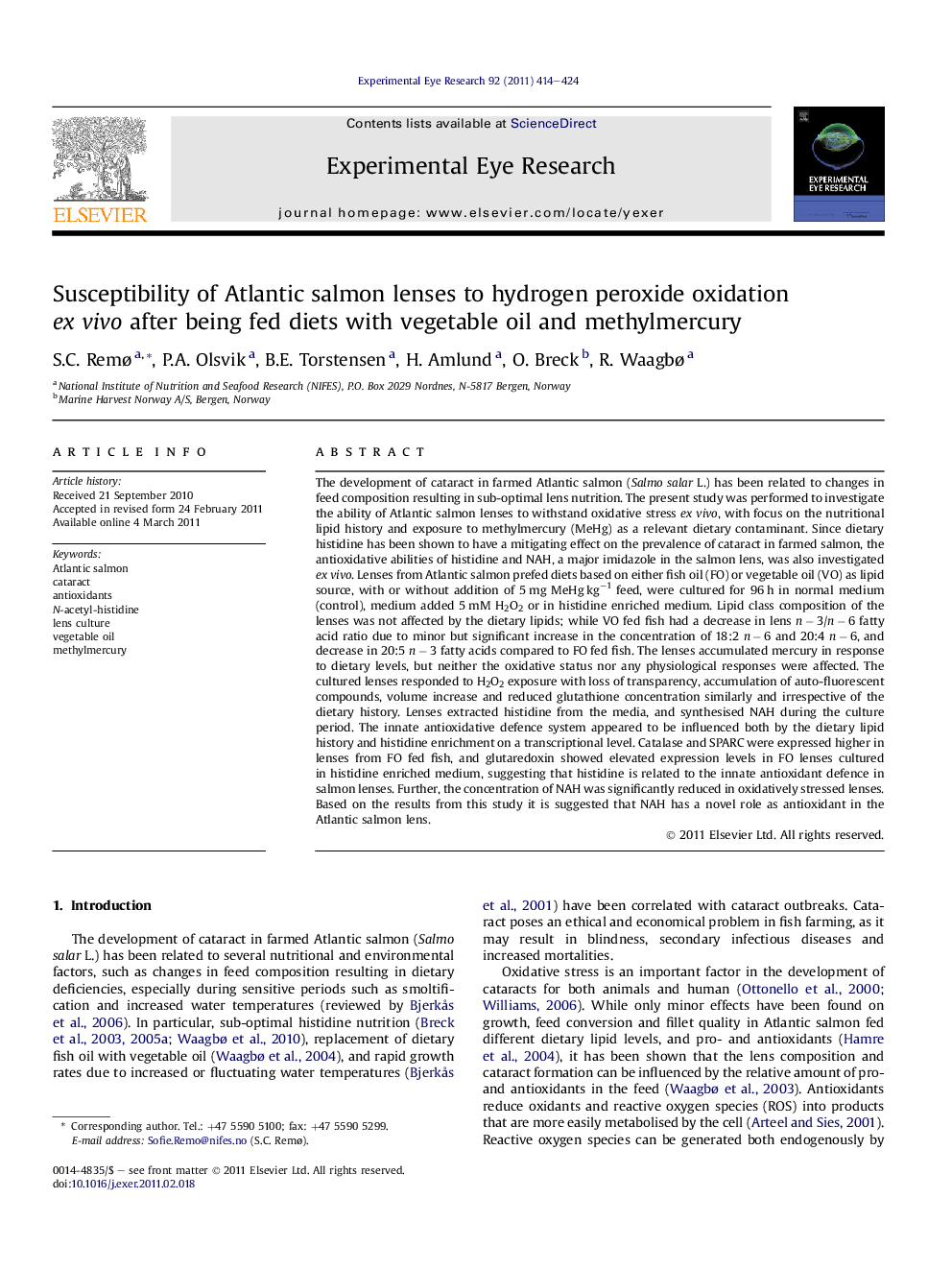| کد مقاله | کد نشریه | سال انتشار | مقاله انگلیسی | نسخه تمام متن |
|---|---|---|---|---|
| 6197455 | 1261158 | 2011 | 11 صفحه PDF | دانلود رایگان |

The development of cataract in farmed Atlantic salmon (Salmo salar L.) has been related to changes in feed composition resulting in sub-optimal lens nutrition. The present study was performed to investigate the ability of Atlantic salmon lenses to withstand oxidative stress ex vivo, with focus on the nutritional lipid history and exposure to methylmercury (MeHg) as a relevant dietary contaminant. Since dietary histidine has been shown to have a mitigating effect on the prevalence of cataract in farmed salmon, the antioxidative abilities of histidine and NAH, a major imidazole in the salmon lens, was also investigated ex vivo. Lenses from Atlantic salmon prefed diets based on either fish oil (FO) or vegetable oil (VO) as lipid source, with or without addition of 5 mg MeHg kgâ1 feed, were cultured for 96 h in normal medium (control), medium added 5 mM H2O2 or in histidine enriched medium. Lipid class composition of the lenses was not affected by the dietary lipids; while VO fed fish had a decrease in lens n â 3/n â 6 fatty acid ratio due to minor but significant increase in the concentration of 18:2 n â 6 and 20:4 n â 6, and decrease in 20:5 n â 3 fatty acids compared to FO fed fish. The lenses accumulated mercury in response to dietary levels, but neither the oxidative status nor any physiological responses were affected. The cultured lenses responded to H2O2 exposure with loss of transparency, accumulation of auto-fluorescent compounds, volume increase and reduced glutathione concentration similarly and irrespective of the dietary history. Lenses extracted histidine from the media, and synthesised NAH during the culture period. The innate antioxidative defence system appeared to be influenced both by the dietary lipid history and histidine enrichment on a transcriptional level. Catalase and SPARC were expressed higher in lenses from FO fed fish, and glutaredoxin showed elevated expression levels in FO lenses cultured in histidine enriched medium, suggesting that histidine is related to the innate antioxidant defence in salmon lenses. Further, the concentration of NAH was significantly reduced in oxidatively stressed lenses. Based on the results from this study it is suggested that NAH has a novel role as antioxidant in the Atlantic salmon lens.
⺠An ex vivo lens culture model was used to investigate the ability of Atlantic salmon lenses to withstand peroxide exposure after being fed either fish oil or vegetable oil. ⺠Lens N-acetyl histidine concentration was significantly reduced in response to oxidative stress, suggesting a novel role as antioxidant in the Atlantic salmon lens. ⺠The innate antioxidative defence system on a transcriptional level was influenced both by the dietary lipid history and histidine enrichment.
Journal: Experimental Eye Research - Volume 92, Issue 5, May 2011, Pages 414-424